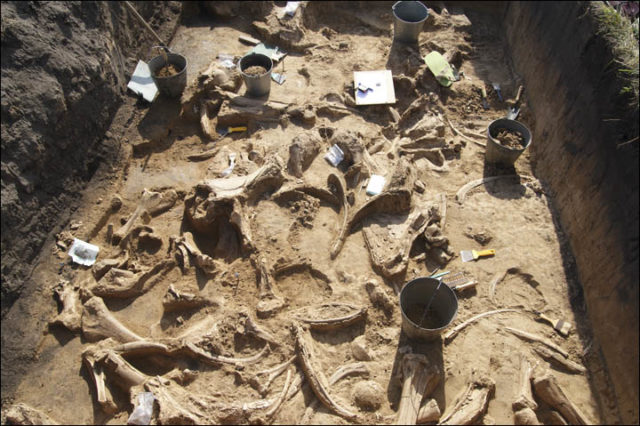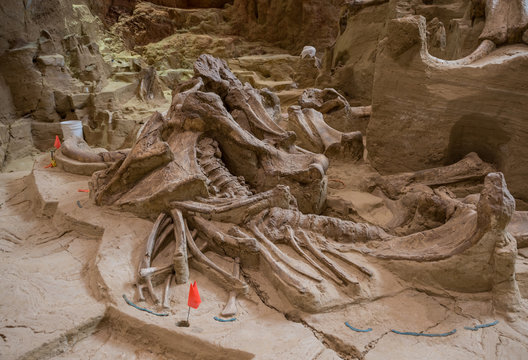In Siberia, a mass grave of woolly mammoths has been discovered, and contains around 550 bones from the massive creatures. The site is close to the Ob River, which measures around 2,268 miles in length, and it is the fifth such necropolis to be found in the Khanty-Mansi Autonomous Region.

The mammoth cemetery contains the remains of at least 11 woolly beasts, but experts believe that further excavations are likely to reveal more. Other animals such as woolly rhinos and prehistoric deer were also found. All the bones are estimated to date back between 10,000 and 30,000 years. A more detailed analysis will be carried out to find a more specific age. The analysis will also hopefully establish why the animals appeared to die together.
Anton Rezvy, who is head of the paleontological department of the Khanty-Mansiysk Museum of Nature and Man, said, “I took part in this expedition. The existence of this site has long been reported to us, but until now we could not specify its exact location.” He continued, “We arrived — and luckily found the site quickly. Part of it was already washed away by the river, and bones just lie on a flat surface of the riverbank.”

Woolly mammoths survived for nearly 350,000 years before dying out. The precise cause of their extinction is widely debated among experts.
“We collected in excess of 500 bones, one from the woolly rhinoceros, three of reindeer, and the rest of the mammoth. For years, people took the bones as souvenirs and as a result we did not find a single tusk, teeth and large bones.” Rezvy said, “It is these that attract people first of all. The great thing is that we have found the place from which the bones were washed away by the river, and now we can conduct the large-scale excavations there.”
So, what about the mass graves?
The Siberian Times reported on the story and stated, “One theory is that the mammoths suffered a mineral deficiency and were desperately seeking calcium at sites of so-called salt licks. Another is that they were trapped by ancient hunters.”
Natural salt licks are gathering places for a variety of animals; these animals seek out salt due to the cravings of their bodies. Minerals found in natural salt are required for the development and maintenance of bones, muscles, circulatory systems and the nervous systems. For example, salt has sodium and chloride, but it also carries trace minerals such as calcium, magnesium, phosphorus, and selenium.

It is this drive for minerals, or rather, the lack of such important minerals, that is key to the demise of the woolly mammoth, claims paleontologist Sergey Leschinsky. The bones at multiple sites, he said, were riddled with osteoporosis. Dr. Leschinsky’s thery is that the creatures were weakened by a lack of calcium, among other vital minerals, that were not available in their food due to the change in climate. This theory of a lack of key minerals is supported by his latest finds on two summer expeditions to the salt like. “The congregation of paleontological remains in this area can be explained by the fact that there were salt licks that local animals liked,” said the academic, from Tomsk State University.

The Siberian Times reported that, “The site was akin to an ancient animal health spa: yet many perished here, perhaps from the conditions which made them seek mineral infusions, or because they became stuck in the clay, or due to attacks by predators at this site,”

Dr. Leschinsky expanded on the mammoth’s behavior. “Large herbivorous mammals would come here to lie in the mud and eat some clay with particular mineral components.” He explained. As they sought their ‘fix’ of minerals from the clay and salt, they “trampled on the bones of their dead peers” which had already died at the site. Natural salt licks are gathering places for a variety of animals that make their way due to the cravings of their bodies.





